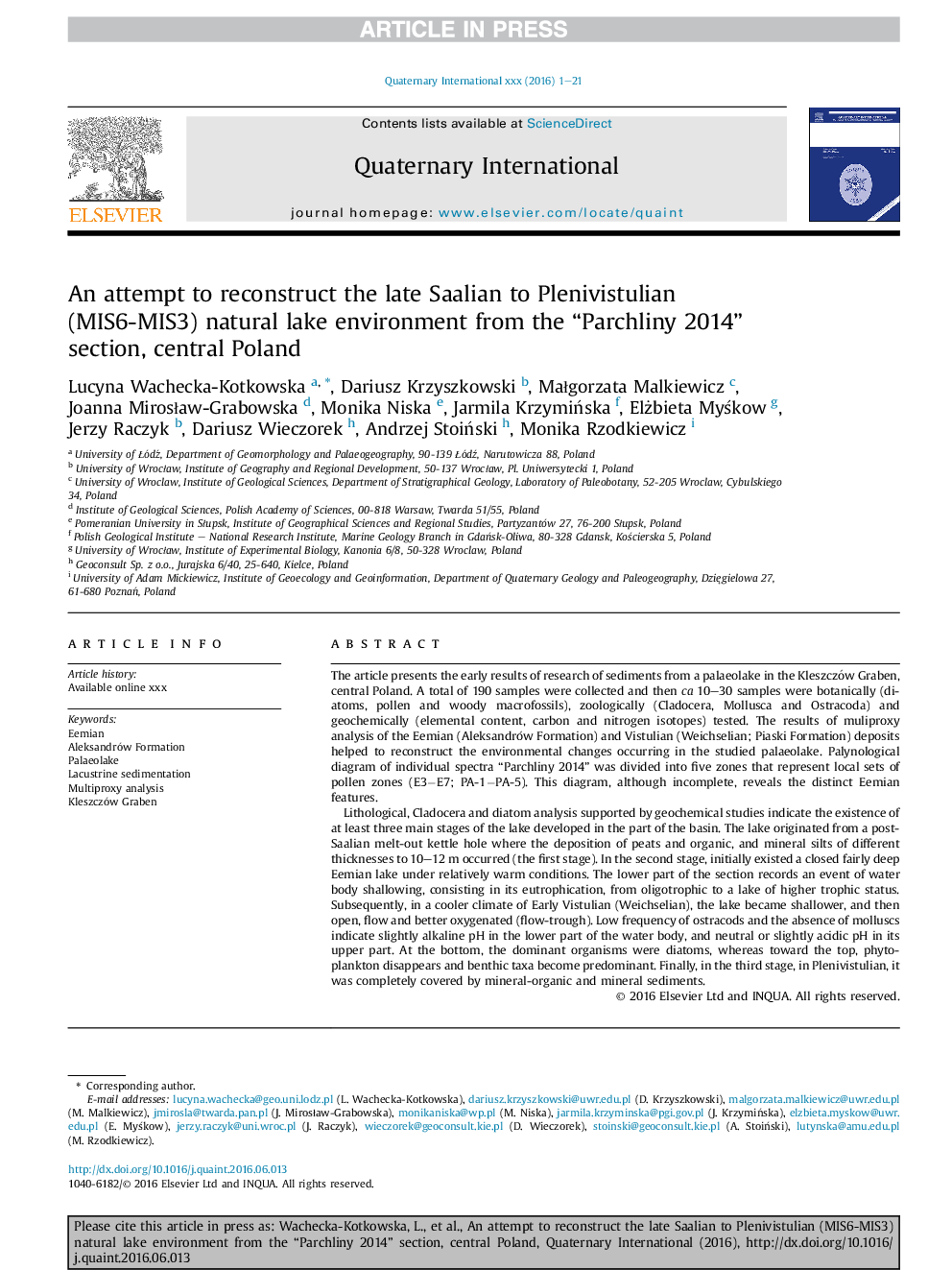| Article ID | Journal | Published Year | Pages | File Type |
|---|---|---|---|---|
| 7450526 | Quaternary International | 2018 | 21 Pages |
Abstract
Lithological, Cladocera and diatom analysis supported by geochemical studies indicate the existence of at least three main stages of the lake developed in the part of the basin. The lake originated from a post-Saalian melt-out kettle hole where the deposition of peats and organic, and mineral silts of different thicknesses to 10-12Â m occurred (the first stage). In the second stage, initially existed a closed fairly deep Eemian lake under relatively warm conditions. The lower part of the section records an event of water body shallowing, consisting in its eutrophication, from oligotrophic to a lake of higher trophic status. Subsequently, in a cooler climate of Early Vistulian (Weichselian), the lake became shallower, and then open, flow and better oxygenated (flow-trough). Low frequency of ostracods and the absence of molluscs indicate slightly alkaline pH in the lower part of the water body, and neutral or slightly acidic pH in its upper part. At the bottom, the dominant organisms were diatoms, whereas toward the top, phytoplankton disappears and benthic taxa become predominant. Finally, in the third stage, in Plenivistulian, it was completely covered by mineral-organic and mineral sediments.
Related Topics
Physical Sciences and Engineering
Earth and Planetary Sciences
Geology
Authors
Lucyna Wachecka-Kotkowska, Dariusz Krzyszkowski, MaÅgorzata Malkiewicz, Joanna MirosÅaw-Grabowska, Monika Niska, Jarmila KrzymiÅska, Elżbieta MyÅkow, Jerzy Raczyk, Dariusz Wieczorek, Andrzej StoiÅski, Monika Rzodkiewicz,
